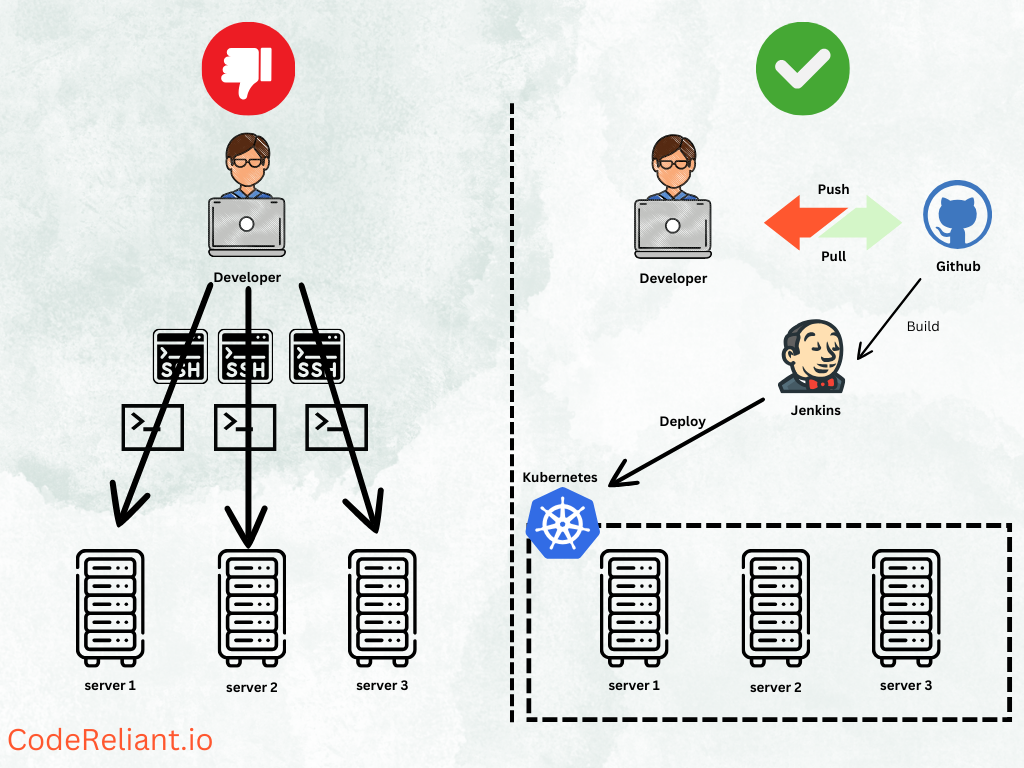Abstraction as a Reliability Tool

Abstraction is a fundamental technique in software design that promotes reliability by reducing complexity. Effective abstraction manages cognitive load by hiding low-level details behind clean interfaces. This simplification isolates instability, avoiding cascading failures when implementations change. Abstractions also encourage reuse of robust, bug-free code.
By enforcing consistency and eliminating special cases, they minimize new defects. When designed well, abstractions create conceptual boundaries that minimize ripple effects from code changes. This results in more modular and resilient software.
In this post, we will explore several ways abstraction leads to more reliable systems by enforcing stability, managing complexity through information hiding, and promoting reuse and consistency.
Reducing Complexity
Complex software systems can quickly become unmanageable without proper abstraction mechanisms in place. When low-level details are exposed across system boundaries, developers must keep track of a multitude of complicated dependencies and interactions. This overwhelms human cognitive capabilities, making the system difficult to reason about and modify without introducing bugs.
Kubernetes leverages abstraction to reduce complexity by introducing the pod concept. Pods encapsulate the details of running containerized processes on nodes into a single deployable unit. Developers don’t need to think about configuring individual containers, networking between them, storage and lifecycle management. All that is abstracted into a pod definition. This raises the level of abstraction from container to application building blocks. Developers can reason about connecting reusable pods rather than wrestling with container intricacies. By hiding those complex lower-level details behind the pod abstraction, Kubernetes reduces cognitive burden and accidental complexity. The pod interface makes it easier for developers to understand and modify applications without having to track all container dependencies and interactions.
By providing stability through simplified interfaces, abstractions support the principles of information hiding and separation of concerns. This compartmentalization into modular pieces with clear boundaries tames complicated connections and dependencies. Such reduction of complexity enables developers to maintain and adapt the system without unraveling the entire web of interrelations. The result is software that is more understandable and less prone to the unintended consequences that accompany changes made to complex, tangled code. In this way, abstraction is an invaluable technique for improving software reliability.
Isolating Instability
Software requirements evolve over time. New features need to be added and existing implementations must be changed or replaced to meet changing needs. However, not all parts of a system are equally prone to change. Abstractions can isolate the impact of modifications by separating stable interfaces from unstable implementations.
For example, Kubernetes, the popular container orchestration system, leverages abstraction to isolate infrastructure instability. The Kubernetes API provides a declarative interface to define desired application states via YAML. This abstracts lower-level infrastructure like nodes, networking, storage systems behind a simple application-centric interface. Developers don’t need to understand the complexity of provisioning and managing containers across clusters. When underlying infrastructure changes, only the Kubernetes controllers need to adapt to maintain the desired state, not the application code. This abstraction boundary isolates the application from turbulent infrastructure details, limiting the blast radius of changes and improving reliability. Kubernetes exemplifies using abstraction to architect robust systems by reducing dependency on complex and changing components.

Well-defined abstractions with clear separation of concerns create conceptual barriers between components. Modules on either side of the abstraction boundary are decoupled from unstable internals. This minimizes the ripple effect of changes, reducing unexpected side-effects that lead to bugs. Focused code modifications become possible without having to understand the entire system. This isolation of instability via abstraction enables more robust and resilient software architectures.
Enforcing Consistency
Inconsistent solutions for the same problem is a recipe for reliability disasters. Special cases add complexity that breeds bugs when modifications are required. Abstractions promote uniformity by enabling reuse of proven solutions and enforcing conformity to known patterns.
For example, an interface for persistent data storage enforces a consistent approach regardless of the backend implementation. Developers rely on the common interface guarantees rather than specialized knowledge of each storage system. The interface abstraction reinforces a unified mental model across the codebase.
Well-designed abstractions also encourage reuse of rigorously tested implementations. New projects can leverage existing battle-hardened solutions right away. This prevents reinventing the wheel and repeating past mistakes. Consistency builds confidence that the abstracted components will work as expected.
By promoting commonality and reuse over special cases, abstractions reduce defects and failures. The resulting uniformity and certainty strengthen the reliability of the entire software system.
Here is a Golang code example demonstrating how abstraction can enforce consistency for storage:
// Storage interface abstraction
type Storage interface {
Read(key string) ([]byte, error)
Write(key string, value []byte) error
}
// Reusable implementations
type DiskStorage struct {
// details hidden
}
func (d DiskStorage) Read(key string) ([]byte, error) {
// read from disk
}
func (d DiskStorage) Write(key string, value []byte) error {
// write to disk
}
type S3Storage struct {
// details hidden
}
func (s S3Storage) Read(key string) ([]byte, error) {
// read from S3
}
func (s S3Storage) Write(key string, value []byte) error {
// write to S3
}
// Application code
var store Storage
store = DiskStorage{} // reusable disk storage
value, _ := store.Read("key1") // consistency through abstraction
store = S3Storage{} // switch to reusable S3 storage
store.Write("key2", value) // same interface, different backendThis shows how the Storage interface enforces a consistent way to use different storage implementations interchangeably.
Managing Cognitive Load
Human cognitive capabilities are limited. When interfaces are complex and highly detailed, developers struggle to manage all the information required to make correct modifications. This overwhelming complexity leads to mistakes as corner cases are forgotten.
Well-designed abstractions deliberately constrain available operations to present a simplified model. This reduces the mental effort required to work with the underlying complexity. The abstraction focuses attention on just the relevant details necessary for a specific task.
For example, containerization platforms like Docker leverage abstraction to reduce cognitive load for developers. Containers abstract away the details of provisioning and configuring complex software stack environments. Developers can work with simplified interfaces to define, run, and connect containers without having to manually set up underlying infrastructure. This frees developers from having to track networking, storage, runtime dependencies, and other low-level complexities. The container abstraction enables them to focus cognitive resources on just the application code and business logic. By hiding environment complexity behind a simple container interface, containerization manages cognitive burden so developers can write code with fewer mental distractions and errors.
By reducing information overload, abstractions enable developers to focus their cognitive resources. This improves understanding of the problem space and limits distraction from irrelevant implementation minutiae. With reduced mental strain, developers can craft solutions with fewer oversights and bugs. Managing cognitive load through effective abstraction is key to developing reliable software.
Here is an example Dockerfile that abstracts away environment details for a Node.js Express app:
# Base image
FROM node:16-alpine
# Set working directory
WORKDIR /app
# Copy app code
COPY . .
# Install dependencies
RUN npm install
# Default port exposure
EXPOSE 3000
# Runtime command
CMD ["node", "app.js"]This Dockerfile encapsulates all the environment setup and configuration required to run a Node.js app:
- Base OS image
- Working directory
- Dependency installation
- Ports to expose
- Runtime command
The developer just needs to write the Dockerfile and their app code. All the underlying detail is abstracted away behind the simple Docker interface of build, run, push/pull. This reduces cognitive strain so the developer can focus on the business logic.
Conclusion
Abstraction is a cornerstone of managing complexity in software systems. By hiding details selectively, abstraction reduces cognitive load and isolates instability which are indispensable techniques for improving software reliability.
The conceptual boundaries created by effective abstractions minimize the ripple effects of change. Abstraction enables modularity and create foundations on which robust and resilient software is built.

Member discussion